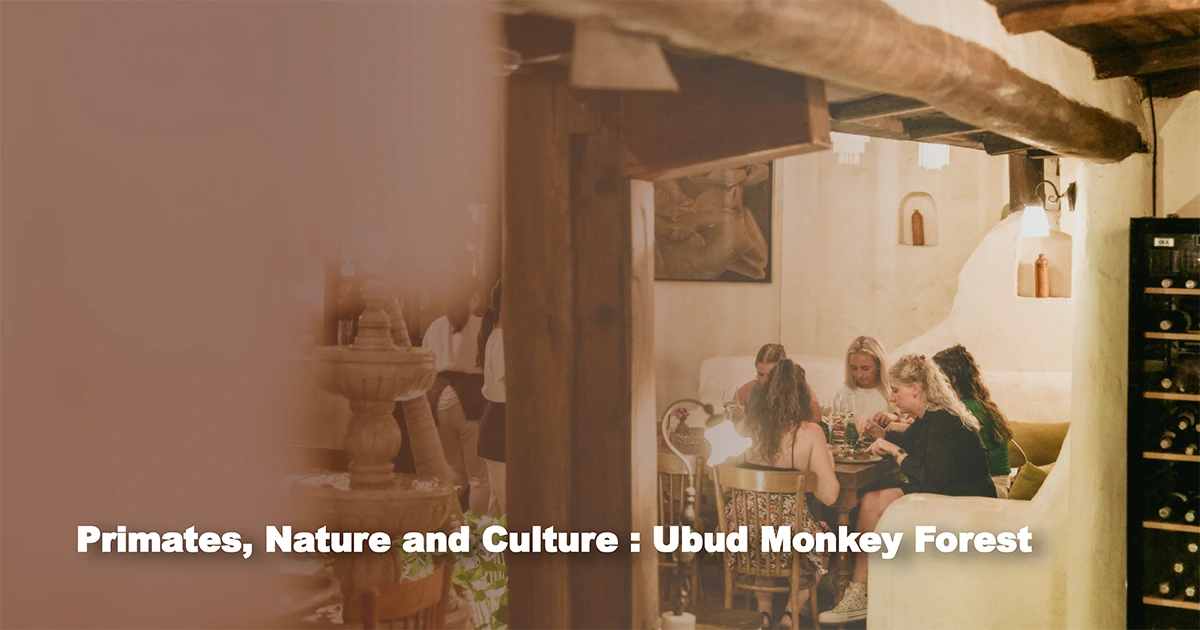Ubud Monkey Forest, also known as the Sacred Monkey Forest Sanctuary, is a captivating blend of natural beauty, cultural heritage, and wildlife preservation. Spanning approximately 27 acres, this verdant sanctuary is home to over 700 long-tailed macaques (Macaca fascicularis) and is one of Ubud’s most popular attractions, drawing visitors from all corners of the globe. This article delves into the many facets of the Ubud Monkey Forest, offering a comprehensive guide to its significance, attractions, and tips for visitors.
What Makes Ubud Monkey Forest Special
1. A Nature Sanctuary with Sacred Roots
The Ubud Monkey Forest holds deep spiritual significance for the local community. The forest is home to three ancient temples, which date back to the 14th century and are still actively used for Balinese Hindu ceremonies. These temples are:
- Pura Dalem Agung Padangtegal
The main temple, dedicated to the god Hyang Widhi in personification of Shiva the Recycler or the Transformer. - Pura Beji
A holy bathing temple used for spiritual and physical cleansing. - Pura Prajapati
A temple dedicated to the village’s deceased, located next to a cemetery.
These temples, though not open to the public for entry, add a layer of mystique and reverence to the forest, underscoring its role as a place of worship and cultural preservation.
2. Flora and Fauna
The lush greenery of the Ubud Monkey Forest is a testament to Bali’s rich biodiversity. The forest is home to approximately 186 species of trees, some of which are considered sacred and are used in various religious rituals. As you stroll along the shaded pathways, you will encounter towering banyan trees, dense foliage, and a variety of other tropical plants that contribute to the forest’s tranquil ambiance.
The primary inhabitants of the forest are the long-tailed macaques. These monkeys are divided into six groups, each occupying different territories within the forest. The macaques are known for their playful and curious nature, often interacting with visitors, sometimes in mischievous ways. It’s important to follow the forest’s guidelines to ensure a safe and respectful interaction with these fascinating creatures.
3. Conservation and Research
The Ubud Monkey Forest is not just a tourist attraction; it plays a crucial role in wildlife conservation and research. The forest management team, in collaboration with various universities and research institutions, conducts ongoing studies on the behavior, health, and ecology of the macaques. This research is vital for developing strategies to maintain the delicate balance between tourism and wildlife preservation.
Moreover, the forest is involved in several conservation efforts aimed at protecting the natural habitat and ensuring the wellbeing of the monkey population. These efforts include habitat restoration, disease prevention, and public education programs that raise awareness about the importance of wildlife conservation.
Visitor Experience in Ubud Monkey Forest
A visit to the Ubud Monkey Forest is a sensory delight. The forest offers a serene escape from the bustling streets of Ubud, providing a peaceful environment where visitors can immerse themselves in nature. The well-maintained paths guide you through different sections of the forest, each offering unique sights and experiences.
Key Attractions
- The Dragon Bridge
A picturesque stone bridge adorned with intricate carvings of dragons and other mythical creatures. This bridge crosses a small stream and leads to the main temple area. - The Holy Spring Bathing Temple
Nestled in a secluded part of the forest, this temple features a sacred spring where locals perform purification rituals. - The Cemetery and Cremation Grounds
Located near Pura Prajapati, this area provides insight into Balinese funeral traditions and the cycle of life and death.
Practical and Safety Tips for Visitors
To make the most of your visit to the Ubud Monkey Forest, consider the following tips:
Respect the Monkeys
While the macaques are accustomed to human presence, they are still wild animals. Avoid direct eye contact, do not feed them directly, and keep your small belongings such as smartphones or eyeglasses secure to prevent any playful thefts from these local fauna.
Dress Appropriately
Wear comfortable clothing and sturdy shoes suitable for walking on uneven terrain. If you plan to visit the temples, ensure your attire is respectful of the sacred site.
Stay Hydrated
The tropical climate can be quite humid, so carry a water bottle and stay hydrated throughout your visit.
Follow Guidelines
Adhere to the rules and guidelines provided by the forest management to ensure your safety and the wellbeing of the monkeys.
Beyond the Forest : Attractions Near Ubud Monkey Forest
The Ubud Monkey Forest is just one of the many attractions in Ubud, a town renowned for its vibrant arts scene, traditional crafts, and stunning landscapes. After exploring the forest, visitors can delve into Ubud’s cultural offerings, including art galleries, traditional dance performances, and local markets.
The Ubud Art Market
Located in the center of Ubud, the Ubud Art Market is a bustling hub where visitors can purchase handmade crafts, textiles, and souvenirs. The market offers a wide array of goods, from intricate wood carvings to colorful batik fabrics, making it an ideal place to find unique gifts and mementos.
Tegallalang Rice Terraces
A short drive from Ubud, the Tegallalang Rice Terraces offer breathtaking views of Bali’s iconic terraced rice fields. Visitors can take leisurely walks through the terraces, enjoy the scenic beauty, and learn about traditional Balinese rice farming techniques.
Ubud Palace
The Ubud Palace, also known as Puri Saren Agung, is a historical landmark that showcases traditional Balinese architecture and art. The palace often hosts cultural performances, providing visitors with a glimpse into Bali’s rich artistic heritage.
The Ubud Monkey Forest is a microcosm of Bali’s natural beauty, spiritual heritage, and commitment to conservation. It offers visitors a unique opportunity to connect with nature, observe wildlife, and appreciate the cultural richness of the island.
Frequently asked questions about the Ubud Monkey Forest
1. What are the opening hours of the Ubud Monkey Forest?
The Ubud Monkey Forest is open daily from 8:30 AM to 6:00 PM. The ticket office closes at 5:30 PM, so it’s advisable to arrive well before closing time to ensure you have enough time to explore the forest.
2. Is there an entrance fee to visit the Ubud Monkey Forest?
Yes, there is an entrance fee to visit the Ubud Monkey Forest. The fees are used for the maintenance of the forest and the welfare of the monkeys. Entrance fee is approximately IDR 80,000 for adults and IDR 60,000 for children. Prices are subject to change, so it’s best to check the official website or contact the forest management for the latest rates.
3. Is the Ubud Monkey Forest wheelchair accessible?
The Ubud Monkey Forest has some paths that are accessible to wheelchairs, but the terrain can be uneven and challenging in certain areas. It’s recommended to have assistance if you are using a wheelchair.
4. Can I bring food into the Ubud Monkey Forest?
It is not recommended to bring food into the Ubud Monkey Forest, as the monkeys can be very attracted to it and may become aggressive in their attempts to get it. To ensure a safe and enjoyable visit, it’s best to leave any food items outside the forest or securely packed away.










